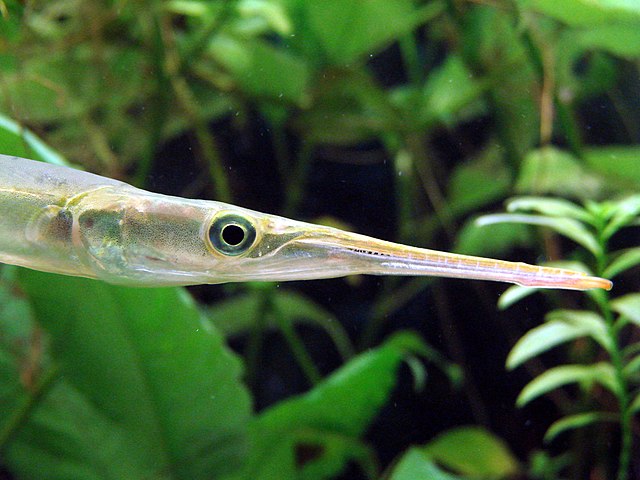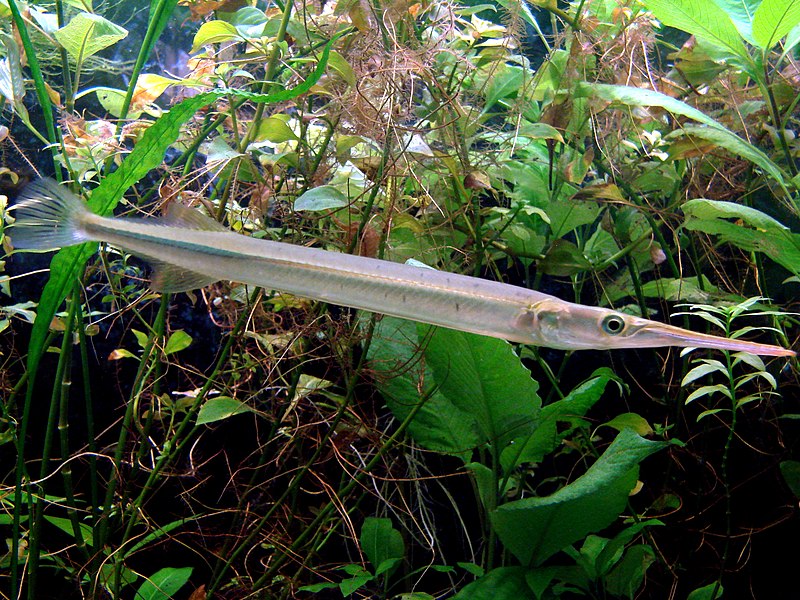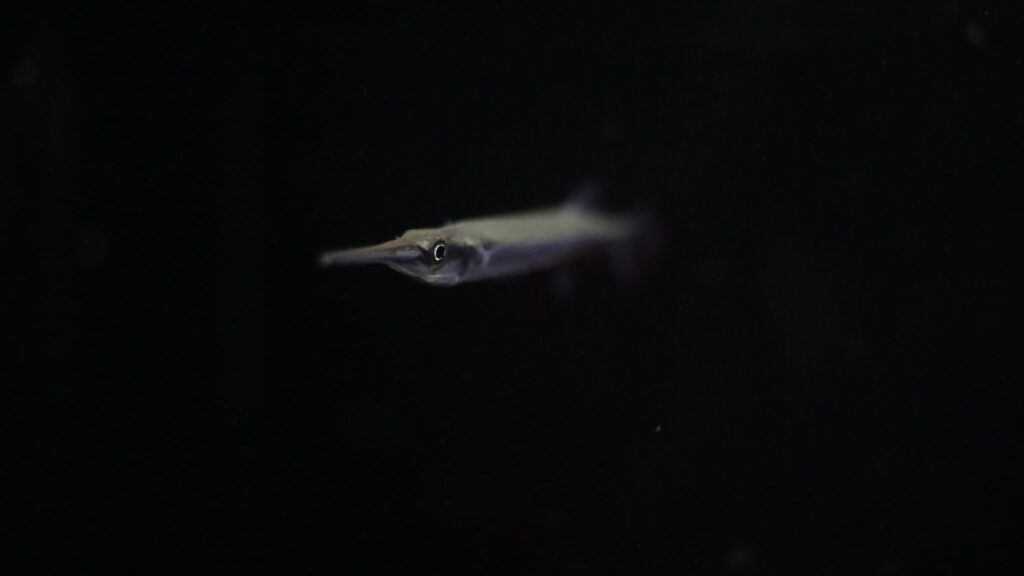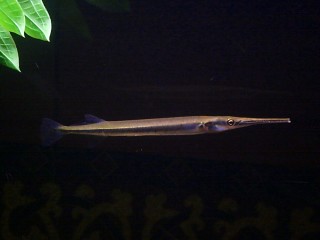Probably one of the best descriptions that I have seen when describing the Needle Nose Gar is this one:

This species tends to do very well in captivity. It is a really cool needlefish that is found in the rivers and ponds of Asia. Their slender body allows them to pick up some major speed while swimming. This makes them excellent hunters.
With their unique body shape and aggressive feeding nature, lots of freshwater aquarium hobbyists have kept these over the years and made them a fairly popular “oddball” fish. While they are pretty unique, they are not reported to be that difficult to keep. Let’s learn more about this species including how to care for them in an aquarium.
How Big Does the Needle Nose Gar Get?
The maximum length of the Needle Nose Gar is between 12” and 18”. The females are larger than the males.
Is The Needle Nose Gar Aggressive?
Yes, this is known to be a pretty aggressive fish. They eat a carnivorous diet and they are especially aggressive during feeding time. If your hand or finger is in between them and their food – bad news for your hand and/or finger.
Needle Nose Gar Teeth
The nose of this fish is also referred to as its beak. Inside of its beak, you will find sharp little needle looking teeth.

Needle Nose Gar Aquarium
This species is a surface dweller. What that means is that they spend most of their time hanging out near the surface of the water. When it comes to keeping this species in an aquarium, the longer the aquarium the better. Height is not as much of an importance, however, keep in mind that the more water volume an aquarium has, the more waste from marine life it can handle (with the proper filtration). The recommended minimum length for a Needle Nose Gar aquarium is 4 feet.
For substrate sand or gravel is recommended. As far as decor goes, secure rock structures that still allow for lots of open space towards the top of the aquarium are recommended. As far as plants go, anything that will grow nicely along the walls of the aquarium and that can provide coverage at the surface of the aquarium are ideal. This species is fast! The plants on the walls of the aquarium are said to help deter them from swimming fast into the walls of the aquarium and injuring its nose. The Needle Nose Gar is also known for its ability to jump. Surface floating plants will help to reduce this urge as well as a snug fitted lid that still allows for gas exchange.
On the filtration front, you will need to have very good filtration without having a ton of flow at the surface of the water. This species is a messy eater and gets fairly large. So a good biological filtration system is going to be necessary in order to have this species thrive in an aquarium.

Here are the recommended water parameter ranges for this species:
- Water Temperature: 76° F – 82° F
- pH: 6.8 – 7.4
- KH: 8 – 15
Like any species, consistent water parameters are the most ideal scenario.
Needle Nose Gar Tank Mates
Since this is an aggressive, fast swimming species with some gnarly teeth, smaller “community” fish that are small enough to end up in its mouth will ultimately end up in its mouth. With that said, other aggressive fish like Cichlids would be a good fit for this species. One fish that is within the Cichlid family that should be avoided is the Oscar.

Needle Nose Gar Care
As long as this fish has enough space to swim and is well fed, this fish is fairly easy to care for. The main thing is the restrictions on tankmates. Anytime you add a new fish to the same tank as a Needle Nose Gar, make sure that you monitor their behavior to ensure that they are getting along. If not, you will need to remove the new fish and find it a new, more suitable home.
Needle Nose Gar Diet
This species is known to eat all kinds of other smaller fish that will fit into its mouth, insects, crustaceans and even frogs in the wild. In human care, this species thrives when they are fed a variety of high quality live foods.
It has been reported that some aquarium hobbyists have seen some success with slowly introducing some frozen foods over time.

Needle Nose Gar Lifespan
This species has a lifespan of about 8 years.
Needle Nose Gar Price
At the time that I am writing this blog post, the Needle Nose Gar price can range from $25 to $35.
And that’s 9 facts about the Needle Nose Gar Fish. If you are interested in learning more about other species of marine life, be sure to check out the Fish Facts section of this website.
